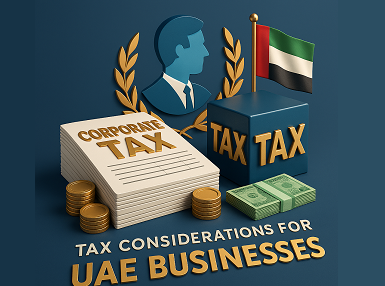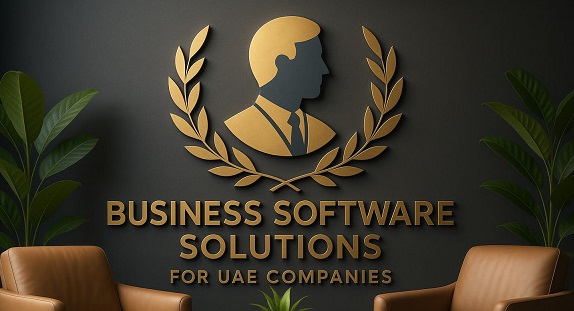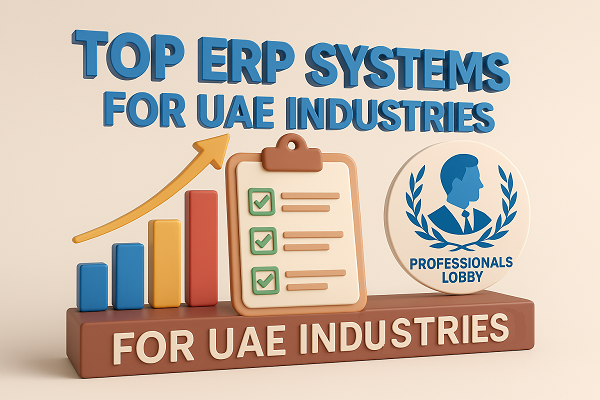As of June 2023, the United Arab Emirates (UAE) has implemented a federal corporate tax (CT) regime applicable to most business entities. While the UAE continues to be a competitive and low-tax jurisdiction, understanding and complying with the new rules is critical for both local and multinational businesses operating in the country. This comprehensive guide from Professionals Lobby explores the essential considerations for corporate tax in the UAE, with a focus on arm's length margin, intercompany transactions, branches, and broader compliance requirements.
Quick Navigation
1. What is Arm's Length Margin?
The arm's length principle is the foundation of transfer pricing rules in the UAE. It requires that transactions between related parties (such as group companies) be priced as if they were conducted between unrelated parties under similar circumstances.
Arm's Length Margin Defined
Refers to the profit margin or price that would be agreed upon in an open market between independent entities.
Why It Matters:
Prevents profit shifting between jurisdictions
Ensures fair allocation of taxable income within multinational groups
Complies with OECD Transfer Pricing Guidelines, which the UAE follows
Practical Examples:
Goods Transfer
If a UAE parent company sells goods to its foreign subsidiary, it must charge a price similar to what it would charge an independent buyer.
Service Fees
A management fee between two related UAE entities must be based on the actual value of services provided and comparable market rates.
Methods to Determine Arm's Length Price:
| Method | Best For | Complexity |
|---|---|---|
| Comparable Uncontrolled Price (CUP) | Standardized products/services with available market data | Low |
| Resale Price Method | Distribution businesses | Medium |
| Cost Plus Method | Manufacturing or service providers | Medium |
| Transactional Net Margin Method (TNMM) | Complex transactions with limited comparables | High |
| Profit Split Method | Highly integrated operations or unique intangibles | Very High |
2. Intercompany Business & Transactions
Businesses often operate through multiple related entities, including subsidiaries, sister companies, or branches. Intra-group transactions must be properly documented and priced according to transfer pricing rules.
Key Considerations for Intercompany Transactions:
Transfer Pricing Documentation
Maintain a Local File and Master File if you meet the threshold (AED 200M in revenues). Documentation should include:
- Company and group structure
- Description of controlled transactions
- Functional and risk analysis
- Comparability analysis
- Selection and application of transfer pricing method
Economic Substance Requirements (ESR)
If you operate in a Relevant Activity (like holding companies, headquarters, IP, etc.), you must meet ESR tests even if exempt from CT:
- Conduct core income-generating activities in UAE
- Have adequate physical presence
- Employ sufficient qualified staff
- Incur adequate operating expenditures
Deductibility of Expenses
Intercompany charges (e.g., royalty, interest, management fee) are only deductible if:
- They are wholly and exclusively for business purposes
- Priced at arm's length
- Adequately supported by documentation
- Not subject to UAE withholding tax (if applicable)
Important: The UAE Federal Tax Authority (FTA) may request transfer pricing documentation up to 5 years after the filing deadline. Failure to maintain proper documentation can result in penalties up to AED 100,000.
3. Branches and Permanent Establishments (PEs)
In the UAE, branches can be domestic or foreign. The corporate tax treatment differs based on their type and location.
UAE Branches of UAE Companies
- Considered the same legal entity as the head office
- Their income is consolidated under one CT filing
- No separate tax registration required
- Transactions between head office and branch are generally not subject to transfer pricing rules
UAE Branches of Foreign Companies
- Taxable in UAE on the income attributable to the UAE branch
- Some sectors may be exempt (e.g., specific oil & gas or banking entities)
- Must register separately for corporate tax
- May trigger Permanent Establishment (PE) exposure
PE Considerations for Foreign Businesses:
Fixed Place PE
Physical presence such as:
- Office, branch, or factory
- Workshop or warehouse
- Mine, oil well, or quarry
- Building site lasting more than 6 months
Agency PE
A person acting on behalf of a foreign business who can conclude contracts in the UAE:
- Dependent agent with authority to bind the principal
- Habitually exercises this authority
- Not an independent agent acting in ordinary course of business
Service PE
Provision of services through employees or other personnel:
- Present in UAE for more than 183 days in 12-month period
- Performing services for same or related project
- Not limited to physical presence
4. General Corporate Tax Rules & Rates
Who is Subject to CT?
- All UAE companies (Mainland and Free Zones), unless exempt
- Foreign companies with UAE Permanent Establishment
- Individuals conducting business activities
- Exemptions: Government entities, qualifying public benefit entities, extractive businesses, non-extractive natural resource businesses
Free Zone Benefits
Free Zone entities can benefit from 0% tax on qualifying income if they:
- Maintain adequate substance in UAE
- Derive "Qualifying Income" (from outside UAE or other Free Zones)
- Comply with all regulatory requirements
- Do not elect to be taxed at 9%
- Meet "de minimis" requirements for non-qualifying income
Corporate Tax Rates:
On taxable income up to AED 375,000
On income above AED 375,000
For multinationals under Pillar Two (consolidated revenue > EUR 750M)
Other Important Considerations:
Tax Grouping
Two or more UAE-resident companies can form a tax group to file a single tax return if one company holds at least 95% ownership and they share the same financial year and accounting standards.
Loss Relief
Tax losses can be carried forward and used to offset up to 75% of taxable income in future years. Losses cannot be carried back.
Small Business Relief
Businesses with revenues under AED 3 million may apply for Small Business Relief (available until 2026), allowing simplified CT obligations.
Transfer Pricing Disclosure Form
All businesses (except those below revenue thresholds) must file a TP Disclosure Form along with their CT return.
5. Key Documentation and Compliance
Corporate Tax Registration
All businesses must register and obtain a Tax Registration Number (TRN)
- Deadline: Based on license issuance date
- Exempt entities must still register
CT Return Filing
All taxable persons must file annually
- Deadline: 9 months after financial year-end
- Payment due with filing
- Must include financial statements
Transfer Pricing Disclosure Form
Required for businesses with revenue > AED 50M
- Summary of related party transactions
- Transfer pricing methods used
Local and Master File
Required for businesses with revenue > AED 200M
- Must be submitted within 30 days of request
- Master File: Group-wide overview
- Local File: UAE-specific documentation
Corporate Tax Compliance Checklist:
6. ERP Integration for Corporate Tax Compliance
Modern ERP systems can significantly streamline corporate tax compliance in the UAE. Here's how top ERP solutions handle tax requirements:
Automated Tax Calculations
- Real-time tax computation based on transaction type
- Support for multiple tax regimes (0%, 9%, 15%)
- Automatic application of small business relief thresholds
Transfer Pricing Management
- Centralized repository for intercompany transactions
- Built-in transfer pricing methodologies
- Automated comparability analysis tools
Compliance Reporting
- Pre-configured UAE tax return templates
- TP Disclosure Form generation
- Audit trail for all tax-related transactions
Top ERP Systems for UAE Corporate Tax Compliance:
SAP Business One
Strengths
- Comprehensive UAE tax localization
- Advanced transfer pricing module
- Global compliance features
Considerations
- Higher implementation cost
- Requires expert configuration
Oracle NetSuite
Strengths
- Real-time tax reporting
- Multi-entity consolidation
- Cloud-based accessibility
Considerations
- Limited Arabic interface
- Subscription model costs
Microsoft Dynamics 365
Strengths
- Seamless integration with Office 365
- Power BI tax analytics
- Strong UAE localization
Considerations
- Complex licensing
- Requires customization for TP
Key Takeaways and Next Steps
The introduction of corporate tax in the UAE is a significant shift for businesses. While the tax rate remains competitive, compliance is now key. Companies must proactively assess their operations, especially intercompany transactions, to ensure they meet arm's length and documentation standards.
Essential Actions for UAE Businesses:
Conduct Tax Health Check
Review your current structure and transactions for CT impact
Implement Documentation
Develop transfer pricing policies and maintain proper records
Assess ERP Capabilities
Ensure your systems can handle CT calculations and reporting
Engage Experts
Work with qualified tax advisors for complex situations
Get Expert Corporate Tax Guidance
Our tax consultants can help you navigate UAE corporate tax compliance and optimize your tax position.
Schedule Consultation


